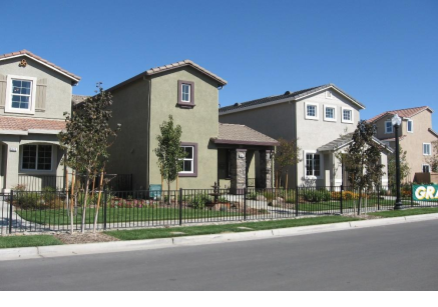In our exploration of how HOAs are shaping our communities, it’s crucial to first define the scope of their influence. HOAs come in various forms, from gated communities to condo associations, each with its unique level of impact on residents’ lives. We’ll delve into the geographical spread and demographic impact of these associations, examining how they shape neighborhoods and cater to diverse populations.
Foundations of Community Shaping
The Impact of HOAs
Moving beyond the surface, we’ll look at the power dynamics and HOA governance structures within boards, shedding light on potential power imbalances and the degree of resident participation in decision-making processes. Furthermore, we’ll unravel the intricate financial landscape of HOAs, dissecting the role of HOA fees and their allocation towards amenities, maintenance, and reserves. By doing so, we aim to uncover potential financial burdens and inequities that may exist within HOA communities, offering insight into the broader implications of these governing bodies on our neighborhoods.
Shaping Society from the Ground Up
Building and Maintaining Harmony
As we navigate the intricate landscape of HOAs and their impact on our communities, it’s essential to examine how these associations can foster a sense of unity and shared values among residents. One of the primary ways HOAs achieve this is through the management of shared spaces and amenities, such as parks, pools, and community centers, which serve as focal points for social interaction and community building. By providing spaces for gatherings and activities, HOAs create opportunities for neighbors to connect, forge friendships, and cultivate a shared sense of belonging. However, amidst this potential for social cohesion, it’s also crucial to analyze the mechanisms in place for conflict resolution within HOA communities. While these associations aim to uphold community standards and regulations, disputes can arise, ranging from minor disagreements to more significant conflicts. Exploring how HOAs navigate and address these challenges sheds light on their effectiveness in maintaining harmony and promoting a thriving community spirit.
Aesthetic Control and Architectural Landscape
Beyond fostering community cohesion, HOAs wield significant influence over the aesthetic landscape of their communities, often through stringent regulations governing architectural styles and landscaping. These regulations aim to maintain a cohesive visual identity and uphold property values, yet they also raise questions about the balance between aesthetic control and individual expression. While some residents appreciate the uniformity and curated appearance that HOA guidelines offer, others may feel constrained by the limitations imposed on their ability to personalize their homes. Exploring this trade-off sheds light on the complexities of navigating aesthetic preferences within the framework of HOA governance.
Living within Rules and Restrictions
Living within an HOA community entails adherence to a myriad of rules and restrictions that dictate various aspects of daily life. From noise ordinances and parking regulations to pet restrictions, these rules aim to create a harmonious living environment while preserving property values and quality of life. However, the enforcement of such rules raises questions about the balance between maintaining order and respecting individual freedoms. While some residents appreciate the structure and order that HOA regulations provide, others may feel encumbered by the perceived infringement on their autonomy. By delving into the impact of HOA rules on residents’ daily lives, we gain insight into the delicate balance between community standards and individual rights within the context of HOA governance.
The Future of HOA Communities: Navigating the Evolving Landscape
Emerging Trends and Innovations
Emerging trends in HOA governance are increasingly focusing on innovative models that prioritize community engagement and transparency. Some HOAs are adopting participatory decision-making processes that involve residents in key governance decisions, fostering a sense of ownership and empowerment within the community. Additionally, the role of technology is becoming paramount in enhancing communication and transparency within HOAs. Platforms and apps designed specifically for HOA management streamline communication channels, provide real-time updates on community matters, and facilitate online dispute resolution, thereby improving efficiency and accountability.
Striving for a Balanced Future
As we strive for a balanced future in HOA governance, it’s essential to consider potential solutions and best practices for mitigating the negative impacts associated with these associations. Encouraging greater resident participation in HOA decision-making processes can help foster a sense of community ownership and reduce the likelihood of overreach by HOA boards. Moreover, advocating for reforms and regulations that promote fairness, accountability, and resident empowerment is crucial in ensuring that HOAs serve the best interests of all residents. Transparency in financial management, clear guidelines for rule enforcement, and mechanisms for resolving disputes fairly are key elements in building trust and harmony within HOA communities.
Conclusion: Beyond the Deep Dive – Leaving Residents Empowered
In conclusion, while HOAs play a significant role in shaping our communities, they also face challenges that require careful consideration and proactive solutions. By embracing innovative models of governance, leveraging technology for enhanced communication and transparency, and advocating for reforms that prioritize fairness and accountability, HOAs can strive towards a balanced future where residents’ rights are respected, and communities thrive. It’s through collective efforts and a commitment to continuous improvement that HOAs can truly fulfill their potential as catalysts for vibrant and inclusive neighborhoods.
In addition to structural reforms and technological advancements, empowering residents with the resources and knowledge to navigate their HOA effectively is paramount. Providing educational workshops, accessible guides, and online resources can equip residents with the tools they need to understand their rights, responsibilities, and avenues for recourse within the HOA framework. Moreover, fostering a culture of transparency and open communication encourages residents to actively participate in community affairs and advocate for positive change. By arming residents with information and support, we can cultivate a community where collaboration and mutual respect thrive, ultimately shaping a future where HOAs serve as agents of positive transformation within our neighborhoods.





